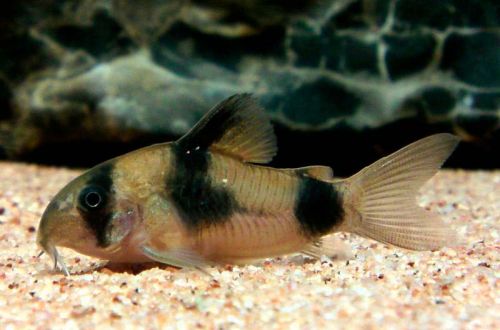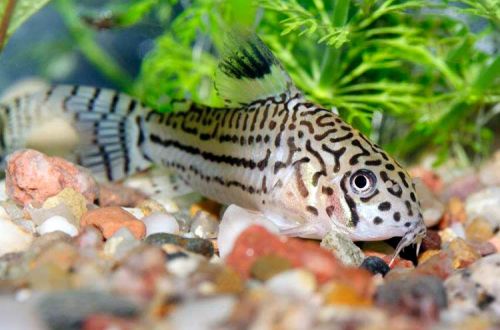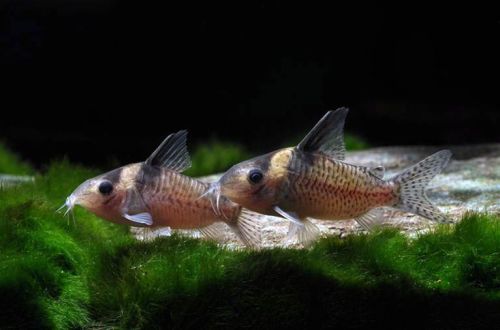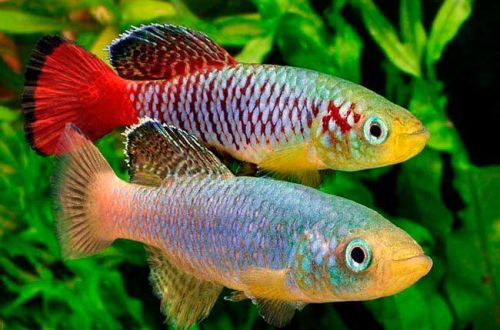
Somik Weizmann
Weizmann’s catfish, scientific name Corydoras weitzmani, belongs to the family Callichthyidae (Shell catfish). The fish is named after the Danish ichthyologist Dr. Stanley Weitzman.

Contents
Habitat
The catfish is native to South America. The exact habitat remains unclear and is described as the western Amazon basin. For the purpose of export for the aquarium trade, these fish are caught from the basin of the Madre de Dios River, one of the tributaries of the Amazon, which flows through the territory of Peru and Bolivia.
Description
Adults reach a length of about 5 cm. The color is light with large dark markings resembling a Panda pattern. As they grow older, the integument of the body may acquire a greenish sheen.
Behavior and Compatibility
Calm peace-loving fish that prefers to be in the company of relatives. It is recommended to purchase a group of 3-4 individuals or more.
Compatible with many other fish of comparable size such as Tetras, pygmy cichlids (Apistogramma, Chromis Butterfly), numerous viviparous fish, Danios, Rasboras, etc.
Brief information:
- The volume of the aquarium is from 50–60 liters.
- Temperature – 20-26°C
- Value pH — 6.0–7.5
- Water hardness – soft to medium hard (5-15 dGH)
- Substrate type – any soft
- Lighting – subdued or moderate
- Brackish water – no
- Water movement is weak
- The size of the fish is about 5 cm.
- Food – any food
- Temperament – peaceful
- Keeping in a group of 3-4 individuals
Maintenance and care, arrangement of the aquarium
The optimal size of the aquarium for 3-4 catfish starts from 50-60 liters. The design uses a soft sandy substrate or soil made of fine gravel, pebbles with a smooth surface (no sharp edges). It is necessary to provide places for shelters from thickets of plants, natural snags, heaps of stones or artificial decorative elements.
The content is simple, Weizmann’s catfish is able to live in various conditions, but prefers soft, slightly acidic water. The lighting is subdued. Current is absent or weak. For this reason, it is recommended to use a simple sponge airlift filter in small aquariums.
Aquarium maintenance consists of standard procedures: weekly replacement of part of the water with fresh water, removal of accumulated organic waste, equipment maintenance.
Food
Not picky about the composition of food. Will accept most popular feeds in live, frozen and dry form. These can be flakes, granules, small invertebrates from bloodworms, daphnia, brine shrimp, gammarus, etc.
Sources: fishbase.se, planetcatfish.com





